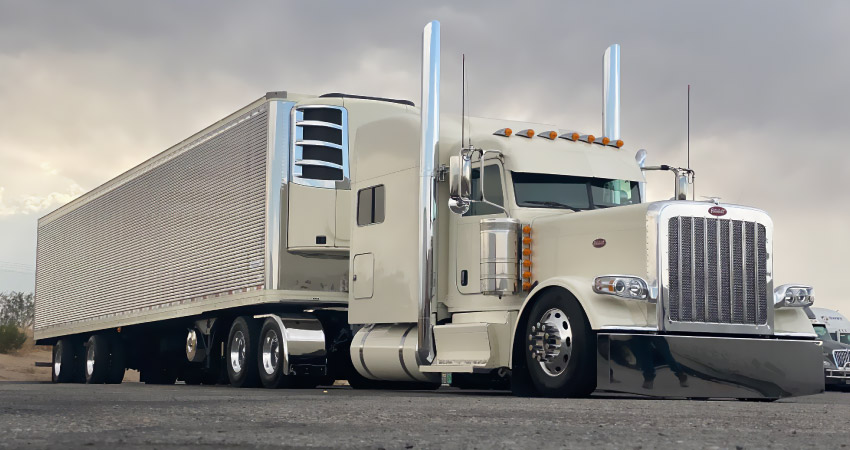

Hey Trucker! If you’re just starting or involved in the freight transportation industry in the United States, chances are you’ve heard of dry van trucks. These trucks, also known as trailers or dry van trailers, are a popular choice for transporting a wide variety of products and goods.
What is a dry van truck?

A dry van truck is a cargo vehicle consisting of a closed and airtight trailer, typically constructed of steel or aluminum, used to transport goods from one place to another. These trailers are easily recognizable by their rectangular design and flat roof, allowing them to maximize cargo capacity. The main advantage of dry van trucks is their ability to protect cargo from the elements and keep it secure and in good condition during transport.
Types of goods transported in dry van trucks
One reason dry van trucks are so versatile and widely used in the United States is the variety of goods they can transport. Some examples of common goods transported in dry van trucks include:
- Manufactured goods: From appliances to electronics and furniture, dry van trucks are ideal for transporting a wide range of manufactured products.
- Non-perishable foods: Dry food products such as grains, cereals, canned goods, and packaged items are safely transported in dry van trucks.
- Construction materials: The construction and building industry uses dry van trucking to transport materials such as wood, plaster, insulation, and other construction materials.
- Pharmaceutical and medical products: Pharmaceuticals that do not require temperature control can be transported in dry van trucks.
- Non-hazardous chemicals: Industrial non-hazardous chemicals that do not require refrigeration, such as detergents and cleaning products, are also transported in dry van trucks.
Advantages of using dry van trucks
- Weather protection: Dry van trucks provide reliable protection against rain, snow, wind, and sun, ensuring that the cargo arrives in optimal condition.
- Security: Most dry van trucks are equipped with security systems, such as locks and seals, to prevent theft and unauthorized handling of the cargo.
- High cargo capacity: Dry van trucks are designed to maximize cargo capacity, meaning they can transport large volumes of goods on each trip.
- Versatility: As mentioned, dry van trucks can transport a wide variety of products, making them a versatile choice for many industries.
Regulations and requirements
It’s important to note that the transportation of goods in dry van trucks is subject to federal and state regulations in the United States. This includes weight, dimension, and safety requirements. Drivers and transportation companies must comply with these regulations to ensure road safety and avoid penalties.
How to determine if my products can be transported in a dry van truck?
For freight transportation companies in the United States, this type of transportation is very common and offers advantages such as cargo protection, versatility, speed, and cost savings. However, not all products are suitable for transport in dry van trucks. Some products may suffer damage or deterioration if exposed to abrupt changes in temperature, humidity, light, or pressure. For example, perishable, frozen, pharmaceutical, chemical, or hazardous products should be transported in refrigerated or hazmat containers or trucks.
To determine if your products can be transported in a dry van truck, consider the following aspects:
- Nature and characteristics of the products: Understand the physical, chemical, and biological properties of the products, as well as their conservation and handling requirements. For example, if your products are sensitive to heat, cold, humidity, or light, you should avoid dry van transport.
- Regulations and current legislation: Comply with the standards and regulations governing the transportation of goods based on the type of product, origin, and destination. For example, if your products are food, health-related, or hazardous, follow the safety and hygiene standards set by the relevant authorities.
- Conditions of the route and destination: Consider the characteristics of the route and the place where the goods will be delivered, including distance, time, weather, infrastructure, and logistics. For example, if your products need to travel long distances or pass through areas with extreme temperatures or contamination risks, choose suitable transportation.
In summary, if you’re involved in the logistics and freight transportation industry in the United States, consider the benefits of using dry van trucks to ensure your products reach their destination safely and in optimal condition.














